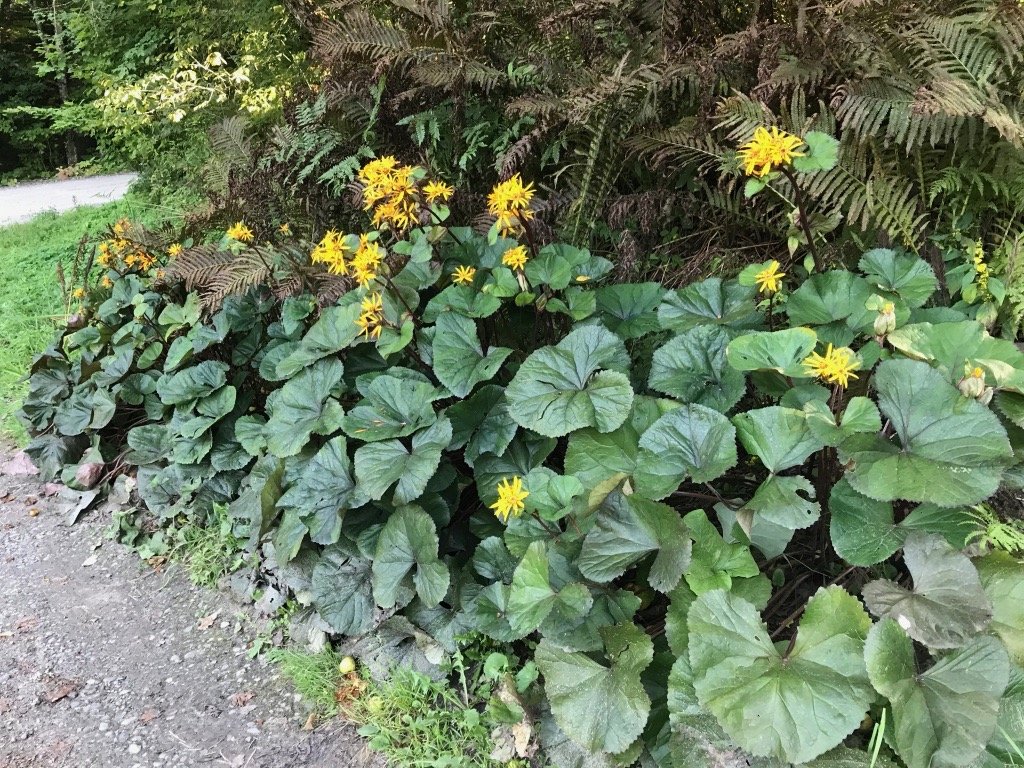Ligularia (Asteraceae)
Leopard Plant is a robust perennial growing 3’-5’ tall with large, round leathery leaves attached to the plant with a long stalk. The foliage of L. Dentata ranges from dark green to a rich burgundy and many cultivars are bred for the large, dramatic foliage that looks great all summer long. In late summer it puts up an orange-yellow composite flower that blooms atop a red stalk. We are also propagating L. Przewalski, known commonly as ‘The Rocket’. This species blooms earlier with a bottlebrush shaped spire of small yellow flowers. A showstopper in the mid-summer garden. Both species like moist soil and will not tolerate hot, afternoon sun. A damp, shady spot is best.
Leopard Plant is a robust perennial growing 3’-5’ tall with large, round leathery leaves attached to the plant with a long stalk. The foliage of L. Dentata ranges from dark green to a rich burgundy and many cultivars are bred for the large, dramatic foliage that looks great all summer long. In late summer it puts up an orange-yellow composite flower that blooms atop a red stalk. We are also propagating L. Przewalski, known commonly as ‘The Rocket’. This species blooms earlier with a bottlebrush shaped spire of small yellow flowers. A showstopper in the mid-summer garden. Both species like moist soil and will not tolerate hot, afternoon sun. A damp, shady spot is best.
Leopard Plant is a robust perennial growing 3’-5’ tall with large, round leathery leaves attached to the plant with a long stalk. The foliage of L. Dentata ranges from dark green to a rich burgundy and many cultivars are bred for the large, dramatic foliage that looks great all summer long. In late summer it puts up an orange-yellow composite flower that blooms atop a red stalk. We are also propagating L. Przewalski, known commonly as ‘The Rocket’. This species blooms earlier with a bottlebrush shaped spire of small yellow flowers. A showstopper in the mid-summer garden. Both species like moist soil and will not tolerate hot, afternoon sun. A damp, shady spot is best.



